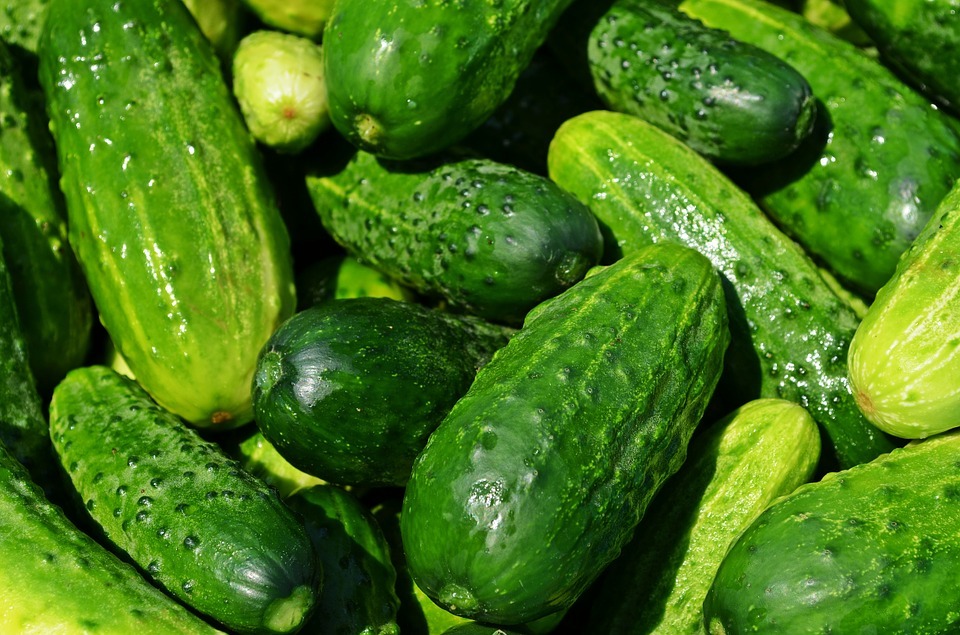Whenever the warm summer heat comes on, cucumbers become a favorite addition to summer sandwiches and salads. But did you know that cucumbers were only once available only at the best-stocked farmer’s markets? And as time pass by, different types of cucumbers started showing up at co-ops, garden patches, and grocery stores more than ever. In fact, you may encounter different kinds of cucumbers during your grocery trips. That’s why we are here to give you a guide about cucumbers and some tips on planting and growing your own cucumber.
Types of Cucumber
- Armenian Cucumber – This type of cucumber has a long and thin appearance along with a light green to light yellow colored skin. American cucumbers are crunchy, and they are best enjoyed when they are simply sliced and eaten raw. They also have soft seeds and thin skin, which means that you will no longer have to seed and peel them before eating. However, they are not suitable for pickling because they have soft flesh.
- English Cucumbers – Also known as hot-house cucumbers or seedless cucumbers, English cucumbers have a very long and thin appearance along with dark green skin. You can often find this cucumber wrapped in plastic at grocery stores. They have a mild to almost non-existent flavor, and they are prized for their thin skin and minimal seeds. And just like Armenian cucumbers, English cucumbers are best eaten raw, and they are not suitable for pickling. They also work well with cocktails.
- Garden Cucumber – These cucumbers are commonly found in North America, and they have smooth and dark green skin. When garden cucumbers are sold at grocery stores, they are often waxed to help them retain their moisture. Garden cucumbers have big seeds; that’s why they need to be removed before using them. Once the seeds are removed, these cucumbers are perfect for any recipe.
- Gherkins Cucumber – This type of cucumber is very small, that’s why if you are looking for cucumber to pickle, this might be a great choice. Gherkins cucumber is famous in France, where they are a classic pair with the pate.
- Kirby Cucumbers –This type of cucumbers are short, and they have bumpy skin. Their colors can range from green to yellow. Kirby cucumbers are crunchy when they are eaten raw, but they give out a burst of flavor once you’ve to pickle them.
- Lemon Cucumber – Lemon cucumbers have yellow skin and round shape, just like the size of a fist. They look like lemons, and they have a sweet taste without the bitter edge. They also have thick skins with minimal seeds. They are tasty when they are eaten raw, but you can pickle them or add them to your salads as well.
- Persian Cucumbers – This type of cucumbers are very much like English cucumbers. They are so similar that they are visually indistinguishable from fresh English cucumbers. However, the big difference is that Persian cucumbers come in a wide range of length and sometimes, they tend to have a slightly bumpy skin just like the Kirby Cucumbers. This type of cucumber has thin skins and a mild flavor. They are perfect for salads or as slices to scoop up the dip.
When to Plant Cucumbers
Keep in mind that cucumbers are frost-sensitive. That’s why you should not plant them too early. We suggest that you should plant your seeds at least two weeks after the last possible frost date. Remember that the soil must be at least 70 degrees Fahrenheit so the seeds will be able to germinate.
If you plan to start growing your cucumber indoors, then you can use a seedling heat mat and set it up to 70 degrees Fahrenheit. You should sow the seeds three to four weeks before you transplant your young seedling plants.
Where to Plant Cucumbers?
Cucumbers are full-sun plants. That is why you may want to place them where they will be able to get at least eight houses of sunlight every day. If you have limited space, then you may want to plant bush cucumbers because they are happy being container plants. On the other hand, if you have some space to spare, you might want to choose planting vining cucumbers instead.
Always make sure that there will be plenty of airflow around your cucumbers. This vegetable is also susceptible to different fungal plant diseases, especially if they are too tightly packed together. That’s why do not cram them in too tightly.
